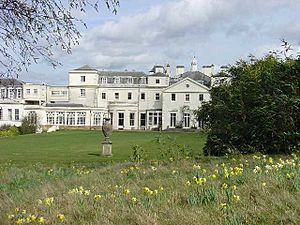Mary Campbell of Mamore facts for kids
Quick facts for kids
Mary Campbell
|
|
|---|---|
|
Portrait of a lady, traditionally identified as Mary Campbell of Mamore
|
|
| Full name |
Mary Campbell of Mamore
|
| Baptised | 4 May 1685 |
| Died | 18 December 1736 |
| Offices | maid of honour to Caroline of Ansbach |
| Spouse(s) | John Campbell |
| Issue | 6, including |
| Father | John Drummond Bellenden, 2nd Lord Bellenden of Broughton |
| Mother | Lady Mary Ramsay, Countess Dowager of Dalhousie |
Mary Campbell of Mamore (born Mary Bellenden, 1685 – 1736) was a Scottish noblewoman. She served as a maid of honour to Caroline of Ansbach, who was the Princess of Wales at the time. Mary later married John Campbell of Mamore, who became the Duke of Argyll.
Life at Court
Mary Bellenden was one of seven children. Her parents were Lady Mary Ramsay and John Drummond Bellenden, 2nd Lord Bellenden of Broughton. She was their third daughter and was baptised in Edinburgh, Scotland, on May 4, 1685.
Mary had a good friendship with Mary Ker, who was married to her cousin. Mary Ker suggested to Caroline of Ansbach, the Princess of Wales, that Mary Bellenden should become her maid of honour. A maid of honour was a young noblewoman who attended to a queen or princess.
Life at court became more exciting with the new Prince and Princess of Wales. Mary was very popular and had many admirers. Famous poets like Alexander Pope and John Gay even wrote poems about her.
Marriage and Family
In 1720, Mary secretly married John Campbell of Mamore. He worked for the Prince of Wales as a Groom of the Bedchamber. After her marriage, Mary lost her position as a maid of honour. However, John Campbell kept his job. They moved to a place called Combe Bank.
Mary and John had six children together. Some of their children included:
- Lady Caroline Campbell (born 1721, died 1803)
- Field Marshal John Campbell, 5th Duke of Argyll (born 1723, died 1806)
- Lord Frederick Campbell (born 1729, died 1816)
- Lord William Campbell (born 1731, died 1778)
Mary Campbell of Mamore passed away in 1736.


